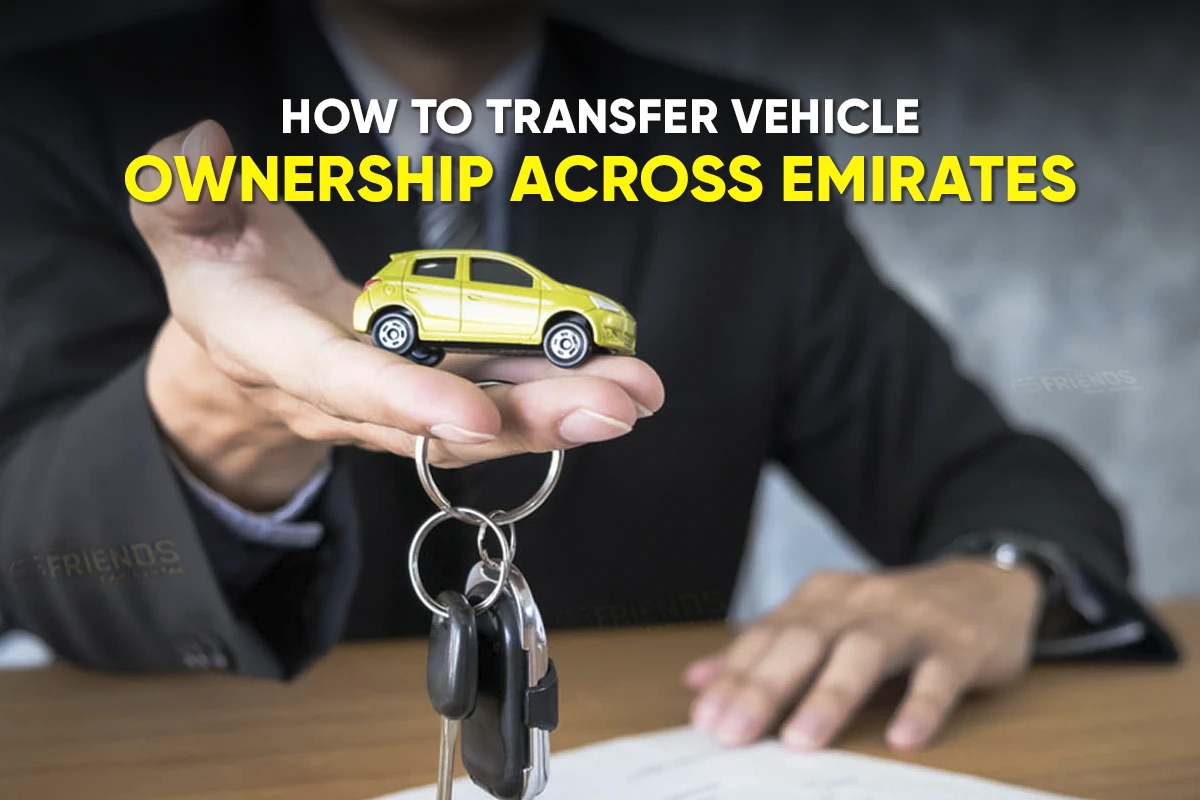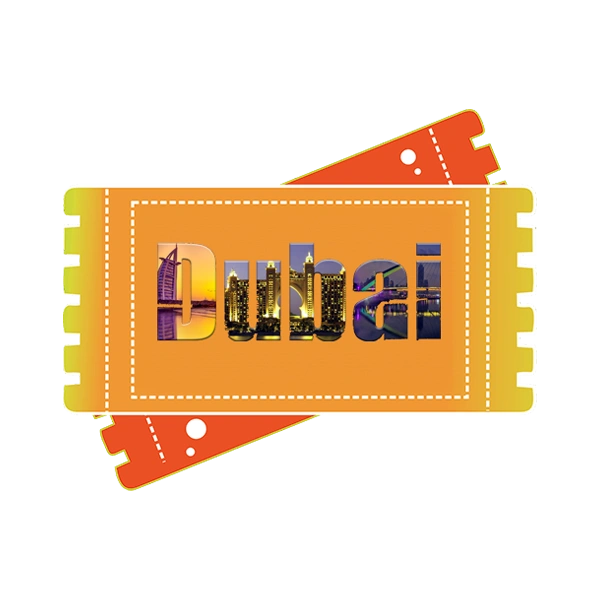How to Transfer Vehicle Ownership Across Emirates

Learn how to seamlessly transfer vehicle ownership across the UAE emirates like Dubai and Abu Dhabi. This comprehensive step-by-step guide offers you the blueprint for vehicle ownership transfers with all requirements, fees, and insightful tips. Let’s explore them.
Understanding the Basics of the Transfer Process
Let’s first understand the basics of vehicle ownership transfers in the Emirates. At its core, it fundamentally involves two steps:
Deregistering the vehicle in the original emirate (say, Dubai).
Registering it in the new one (say Sharjah or Abu Dhabi).
This is all you need to know about vehicle transfer in the UAE for now. We’ll dive into the emirate-specific transfer systems & compliance in the later section.
How to Transfer Vehicle Ownership Across Emirates?
To transfer vehicle ownership across Emirates, you need to follow these steps:
Step 1: Clear Outstanding Fines and Loans.
Step 2: Obtain a Vehicle Inspection Certificate.
Step 3: Prepare and Submit Documents.
Step 4: Deregister and Export the Vehicle.
Step 5: Pay Transfer Fees.
Step 6: Register the Vehicle in the New Emirate.
Step 7: Update Insurance and Accounts.
Who Can Transfer Ownerships & What You Need
After understanding the fundamentals of vehicle transfers in the UAE, the next crucial step is to determine who is eligible to transfer ownership and to gather all the necessary documents. Preparing these essential aspects without any issue will ensure a smooth transition. Let's explore these two in detail.
Eligibility
Not everyone in the Emirates can transfer or take ownership of a vehicle. The UAE traffic law mandates these two parties to meet certain criteria for a legal & seamless process. These are the fundamental requirements:
Seller: The first party—seller must be the legal owner of the vehicle with a valid UAE driving license with no outstanding fines or loans.
Buyer: The second party—buyer must be a UAE resident with a valid residence visa and driving license.
Vehicle: The vehicle being transferred must pass a technical inspection (mandatory if over 3 years old).
These three are the basic eligibility requirements for vehicle transfer in the UAE. If any one of these criteria doesn’t meet, seamless transfer is not possible.
Required Documents
Upon meeting the above eligibility requirements, both parties (buyer & seller) must gather specific set of documents, which are crucial for vehicle ownership transfer across the United Arab Emirates. Here is the comprehensive list:
Vehicle Registration Card (Mulkiya): Original Mulkiya (vehicle registration card).
Emirates ID: Original IDs for both parties. Passport copy is usually acceptable if the ID is expired. Alternatively, a decree from the General Directorate of Residency and Foreign Affairs (GDRFA).
Passport and Valid Residence Visa: Copies for both parties (originals may be required for further proof).
Insurance Certificate: A valid insurance policy in the buyer’s name (or transferred from the seller if still valid). If expired, a new 13-month policy is needed.
Sale Agreement: A signed and notarized agreement between buyer and seller.
No Objection Certificate (NOC): Required if the vehicle is under a loan or mortgage, issued by the financing bank.
Vehicle Inspection Certificate: A pass report from an authorized center like Tasjeel, confirming the vehicle’s roadworthiness, especially if the vehicle is above 3 years old.
Additional Requirements for:
Companies: A valid trade license, authorization letter, and certified signature endorsement if the transfer involves a business.
Diplomats: A valid diplomatic card and a letter from the Ministry of Foreign Affairs.
Non-Residents: Proof of ties to the emirate (e.g., property ownership or employment).
For GCC Nationals: A document proving the vehicle complies with Gulf specifications if not indicated on the customs card.
Cross-Emirate Vehicle Ownership Transfer: Step-by-Step Process
Having a comprehensive understanding of the eligibility and document requirements for cross-emirate vehicle ownership transfer, let’s move on to the main section of the guide: the step-by-step process. Let’s navigate through the steps without further ado.
Step 1: Clear Outstanding Fines and Loans
The initial step is all the seller’s part. They must settle any traffic fines (e.g., Salik or other violations fines) and clear any vehicle loans or mortgages. If you are the seller, you can check and pay such pending fees and fines via the RTA app (Dubai) or TAMM platform (Abu Dhabi).
If your vehicle is financed, you must also obtain an NOC from the bank or the financial institution financing the vehicle. Know that some banks, like Emirates NBD, offer solutions like AutoSwap to simplify loan settlements.
Step 2: Obtain a Vehicle Inspection Certificate
The second step is also the seller’s responsibility. You must obtain a vehicle inspection certificate that indicates your vehicle's roadworthiness. This is a mandatory step and more crucial for those vehicles above three years old.
The seller can visit an authorized testing center like Tasjeel to get their vehicle tested and obtain the necessary certificate. The UAE authorities mandate this certificate for the transfer to go through.
Step 3: Prepare and Submit Documents
Step three is a combined effort. In this step both parties: buyer and seller must collect the above-mentioned documents (all of them) and submit them to the related authorities, per the emirate.
In Dubai: You can submit documents at an RTA Customer Happiness Centre, Vehicle Testing Centre, or online via the RTA website (rta.ae) or Dubai Drive app using UAE Pass. Both parties must digitally sign the sale agreement.
In Abu Dhabi: The parties involved can submit the documents via the TAMM portal (tamm.abudhabi) or Abu Dhabi Police website for online transfers, or visit a TAMM Service Centre. Both parties must provide OTPs for verification.
Other Emirates (e.g., Sharjah or Fujairah): Both parties must visit the Traffic and Licensing Department or equivalent authority. For example, Sharjah requires a completed Vehicle Ownership Transfer Form and similar documents.
Step 4: Deregister and Export the Vehicle
You (the seller) must deregister your vehicle in the original emirate at the UAE’s official transportation authorities, like the RTA center in Dubai or a TAAM center in Abu Dhabi. The authorities will then mark it for export.
Once deregistered, you cannot drive it without number plates during the transfer—it’s illegal. This mandates vehicle transportation via a recovery truck. Make necessary arrangements for the legal transportation of the vehicle to the place of its new registration.
Step 5: Pay Transfer Fees
This is the final step for the seller. As the seller is responsible for deregistration fees and the buyer for registration and new license plate number, they must settle the payment for the ownership transfer accordingly. These transfer fees include:
In Dubai:
Seller's Export/Deregistration Fees:
Vehicle Export Certificate: AED 100
Export Number Plates (if required for transportation): AED 70
General Transfer & Registration Fees (often paid by buyer):
Light vehicles: AED 350
Heavier vehicles: AED 400–1,000 (depending on weight/type)
Knowledge/Innovation fees: AED 20
Sale agreement processing fee: AED 50 (if applicable at the service center)
New Number Plates (various types): AED 35 - AED 500+ (depending on choice: standard or luxury car plates)
In Other Emirates (Abu Dhabi or Sharjah): The fees for transfers and transportation are similar but can vary, depending on vehicle type, with additional testing charges.
Important Note: These fees are approximate and subject to change. Always confirm the latest charges with the respective emirate's traffic authorities (TAMM in Abu Dhabi, or the Sharjah Traffic and Licensing Department/Tasjeel centers).
Step 6: Register the Vehicle in the New Emirate
The next step is re-registering the vehicle in the new Emirate, say Ras Al Khaimah or Ajman. This is now the buyer’s responsibility to submit all the necessary documents (assembled earlier throughout the process) to the traffic authority in the new emirate (e.g., RTA for Dubai, TAMM for Abu Dhabi, or the Traffic and Licensing Department for Sharjah).
The authorities carefully assess and verify the requirement. Upon meeting all the requirements, the buyer will get a new Mulkiya (vehicle registration card) issued in their name. They will also get new number plates if requested earlier.
Step 7: Update Insurance and Accounts
This is the final step (sometimes, optional) of any vehicle ownership transfer across emirates, which is also the buyer’s responsibility. The buyer must secure a new insurance policy or transfer the existing one. Insurance cannot be directly transferred in Dubai, so a new policy may be required. Make the necessary updates to accounts like Salik (Dubai) or DARB (Abu Dhabi) to reflect the new ownership.
Tips for a Smooth Transfer
Now that you’ve accumulated all the details for how to transfer vehicle ownership across Emirates, let’s take a look at some insightful tips for a smooth process. These steps simplify your transfers while eliminating any potential delays & hindrances.
Both parties must assemble and verify that all the required documents are complete and valid to avoid any possible delays.
Make sure there are no pending fines or any payments related to traffic violations as they can prolong the wait times.
Schedule appointments at service centers to reduce wait times (e.g., via the TAMM app in Abu Dhabi). Alternatively, opt for an online process completely for convenience and bypass the waiting queues.
The seller must mandatorily have his/her vehicle tested to obtain the required vehicle test certificate. This will eliminate any post-transfer issue.
Make sure (both parties) have the latest and most up-to-date information about the requirements and pricing structures to avoid surprises. You must leverage the official online platforms, like RTA Dubai, TAAM Abu Dhabi, and so on.
Emirate-Specific Notes
Here are some emirate-specific ownership transfer information as a bonus.
Dubai: This Emirates uses an independent system for deregistering, while RTA handles transfers. Also, to reiterate: there is no direct insurance transfer in Dubai.
Abu Dhabi: The UAE capital uses a Federal system complemented by TAMM or Abu Dhabi Police, offering faster online processing.
Sharjah/Others: Unlike Dubai, the remaining emirates rely on the Federal system, which is enforced via emirate-specific Traffic Departments. However, these five emirates (Shrajah, Ajman, Ras Al Khaimah, Umm Al Quwain, and Fujairah) have limited online options.
Conclusion
How can you transfer vehicle ownership across Emirates? It’s easy, you simply need to follow the above-mentioned 7 steps with a prior document collection and verification. Transferring vehicle ownership in the UAE can be a seamless experience once you trace out its blueprint—the exact intent of this step-by-step guide. If you think I’ve left out some steps or document details, feel free to mention them in the comments. Stay updated and make your vehicle transfers a smooth process in the Emirates with this guide.
FAQs:
1. What are the vehicle ownership transfer options across the Emirates?
You can transfer your vehicle ownership across the UAE Emirates via online (Dubai Drive app., RTA Dubai, TAAM Abu Dhabi) or in person (RTA Customer Happiness Centres, Vehicle Testing Centres, TAMM Service Centres, or Abu Dhabi Police branches).
2. How long does it take for vehicle ownership transfers in the UAE?
The vehicle ownership transfers in the UAE can take anywhere from 7 to 21 days. Document submission will take only a few minutes, verification can take up to 2-3 days, and the issuance of the new Muliya after completing the transfer will take up to 21 days.
3. How much does it cost to transfer vehicle ownership in the UAE?
The cost to transfer vehicle ownership in the UAE can vary from AED varies by emirate and vehicle type, typically including deregistration/export fees for the seller and registration/new plate fees for the buyer. The transfer fees often cost around AED 350 - AED 1000 plus additional charges for inspection, knowledge/innovation fees, and number plates.
Written by: FriendsCarRental
Published at: Thu, Jul 10, 2025 4:31 PM
Leave a Reply
Your email address will not be published. Required fields are marked *
Car Rental in Dubai
AED 2500
DAY
AED 0
MONTH
-
 SUV
SUV -
 4 Doors
4 Doors -
 5 Seats
5 Seats
- 1 Day Rental Available
- Deposit: Not Required
- Insurance Included
AED 5500
DAY
AED 0
MONTH
-
 Sports
Sports -
 2 Doors
2 Doors -
 2 Seats
2 Seats
- 1 Day Rental Available
- Deposit: Not Required
- Insurance Included
AED 1200
DAY
AED 0
MONTH
-
 SUV
SUV -
 4 Doors
4 Doors -
 5 Seats
5 Seats
- 1 Day Rental Available
- Deposit: Not Required
- Insurance Included
AED 1600
DAY
AED 0
MONTH
-
 SUV
SUV -
 4 Doors
4 Doors -
 5 Seats
5 Seats
- 1 Day Rental Available
- Deposit: Not Required
- Insurance Included
AED 1500
DAY
AED 28500
MONTH
-
 SUV
SUV -
 4 Doors
4 Doors -
 5 Seats
5 Seats
- 1 Day Rental Available
- Deposit: Not Required
- Insurance Included

 عربي
عربي
 English
English
 Français
Français
 Русский
Русский
 中国人
中国人
 Nederlands
Nederlands
 Española
Española
 Türkçe
Türkçe
 Italiana
Italiana














































